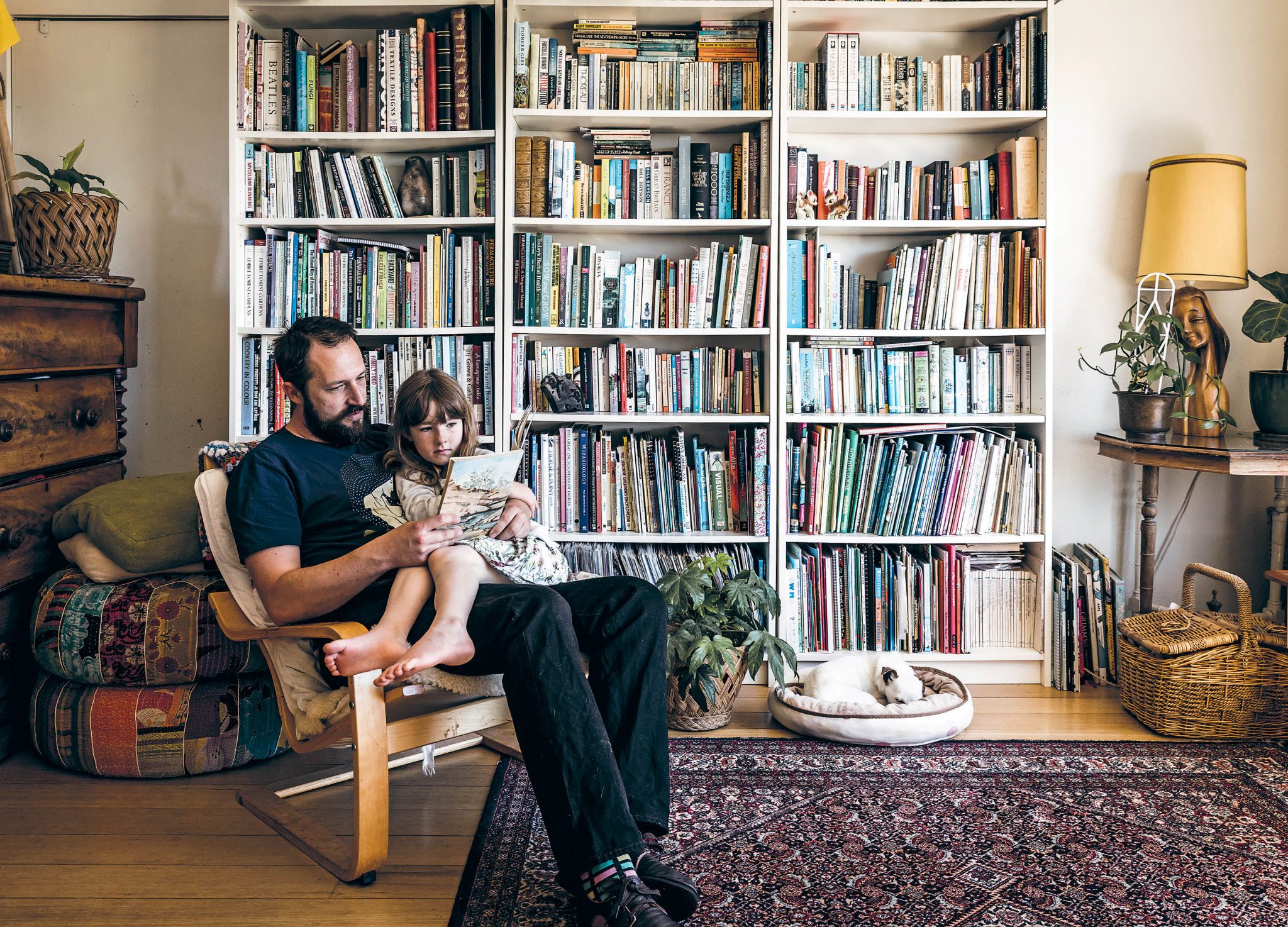
Waste-free Living: Legacy Waste
For Tasmanian couple Lauren and Oberon Carter and their children, going zero-waste resulted in their total rubbish from the last two-and-a-half years fitting comfortably into a small glass jar on their kitchen worktop. It wasn’t always like that though – as founders of Zero Waste Tasmania, they understand the trials and tribulations of going zero-waste, and their new book is a total how-to of tips and tricks to get started and then continue making progress for years to come. Here, we publish an extract from ‘A Family Guide to Waste-Free Living’ – what to do in those initial stages, when you realise your house is already chock-full of pre-zero-waste purchases that weren’t made to last forever…
We all accumulate stuff. Some of us more than others. Anyone with a hobby, actually, anyone trying to meet basic needs, will at various times buy, make, inherit, borrow, create and/or otherwise accumulate belongings. Some of our stuff lasts a lifetime or longer, like Great-Grandma’s ceramic hand mirror, or lovely old teapots, handed down for generations. But the trend towards things not being built to last, and the trend towards planned obsolescence, means that things break, lose their function and become waste. The waste that results from the stuff you owned before making that decision to go waste free is termed legacy waste.
For anyone switching to a waste-free lifestyle, there can be the warm and fuzzy feeling of knowing that you haven’t created any new waste in the last week or month or more. But what about all the legacy waste from other stuff that fills your home; belongings from the glory days when ignorance was bliss, when we bought and wasted with reckless abandon?
We can all lose our minds dwelling on past purchases, on our past adventures in wasteful frivolity. Or, we can be practical and do our best to deal with the mess we’ve made.
What about when our nylon clothes fall apart, when the washing machine breaks, when those so-called sturdy plastic storage tubs snap, when the dog chews the elastane out of your slippers, when you find that drawer of old mix tapes that no-one would ever want to hear again? How do we live a waste-free life when we still live in a house containing items from our past that will at some point lose all function and become waste?
Ahh, sweet regret. Why did we say yes to the crappy plastic toys that accompany that fast-food takeaway we bought for the kids? Why did we buy that plastic weed mat that seems to attract weeds more than suppress them, only to create a hulking mass of plastic and unwanted plants? Why did we choose the cheaper plastic-handled frying pan rather than the long-lasting cast-iron one? Such is the benefit of hindsight. We can all lose our minds dwelling on past purchases, on our past adventures in wasteful frivolity. Or, we can be practical and do our best to deal with the mess we’ve made.
We’ve lived in our home for more than 10 very busy years, raised three children there, cared for a menagerie of animals and tried to be resourceful and generally survive through life, all the while accumulating ‘stuff ’ to help us grow and learn and live. As a sort of final transition, we agreed to collate our legacy waste and dispose of it as best we could – we sold or bartered some items, donated others and retained some items for re-purposing. Some things were so worn and broken, they were only good for landfill.
We’d urge you to take this process on slowly and don’t rush to throw out all the items that no longer fit your lifestyle.
We acknowledged the relatively short life span of many items that we previously thought should last a long time. We noted the lack of waste-free options for some items and the wastefulness of buying the cheaper option instead of saving for quality, or avoiding altogether. We acknowledged the impulse garage sale purchases of items that we never really needed. We resolved to take better care of the things that we already owned. That included looking after stuff in the time between finishing with it and finding a new use or home for it. Leaving stuff out in the elements to weather and rot often rendered it useless.
One big benefit in assessing our legacy waste was that our children were part of the decision-making process and became well aware of the consequences of our past mistakes. We hope this means that their legacy will be minimal and conscious choices will be their normal. We talked and ruminated for a while and felt some sadness and regret over the waste that we made before, but felt reaffirmed in our criteria for any new things that came into our home.
There will always be a transition in seeking to live waste free. Transitioning away from legacy waste is an important part of switching to a waste-free lifestyle. It is not necessarily something to feel guilty about, but should strengthen your resolve to do better and shop smarter and find those waste-free alternatives. We’d urge you to take this process on slowly and don’t rush to throw out all the items that no longer fit your lifestyle. Instead, use the tools and items in your home until they are no longer useful and beg for replacement. Alternatively, find them a loving home somewhere else. After all, there’s nothing waste free about suddenly disposing of a large number of useful things, simply for the sake of a new way of life.


